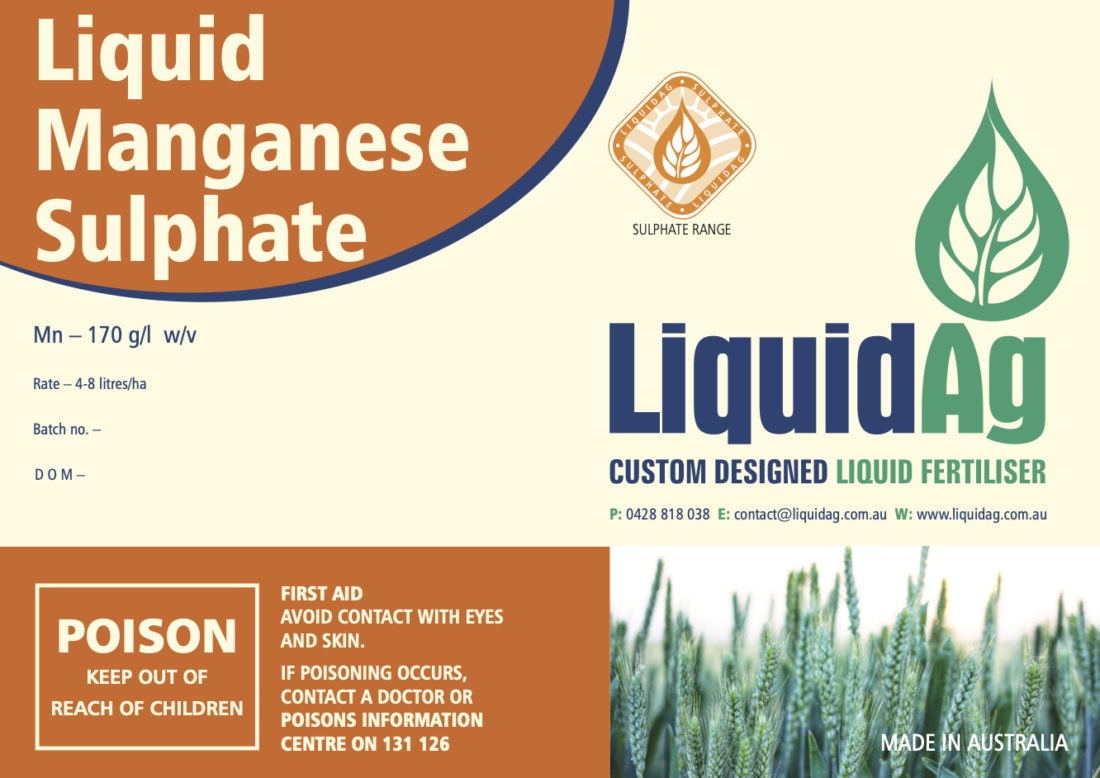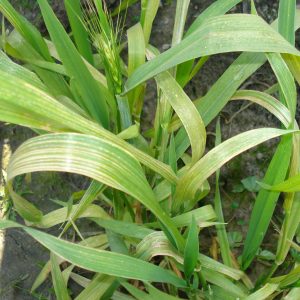Liquid Manganese Sulphate

Directions for Use
Soil Injection
As an addition to a multi Trace blends Manganese can contribute to early seedling health, however when applied to the soil the manganese can be locked up and bound to the soil especially in calcareous high pH soils.
| Soil Injection | Rate (l/ha) | Water rate (l/ha) | Comments |
|---|---|---|---|
| Furrow Injection | 2-8 litres/ha | 40-100 litres/ha | - |
Foliar Spray
Foliar sprays are the most effective. Multiple sprays may be required especially on lighter soils and when late winter/spring growth is strong and robust. Manganese should be applied from early to mid tillering and then as needed. For best results in field crops use robust water rates for good leaf area coverage as Manganese is very immobile in the plant. Manganese is also critical in flowering Lupins as deficiency will delay maturity.
| Foliar Spray | Rate (l/ha) | Water Rate (l/ha) | Comments |
|---|---|---|---|
| Cereals | 4-8 litres/ha | 70-100 litres/ha | Early to mid tillering |
| Canola | 4-8 litres/ha | 70-100 litres/ha | Adequate leaf area |
| Beans + Legumes | 4-8 litres/ha | 70-100 litres/ha | Adequate leaf area |

